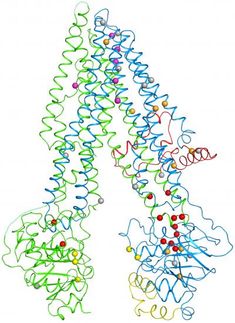Scientists propose new method for studying ion channel kinetics
Advertisement
Scientists working at Los Alamos National Laboratory have developed a new method for the study of ion channel gating kinetics. An ion channel is a protein pore that lets ions pass through a cell's membrane. The method fits data to a new class of models, called manifest interconductance rank (MIR) models, which will give researchers a better understanding of the mechanisms by which ion channels open and close.
In research published in the current issue of Proceedings of the National Academy of Sciences, Laboratory theorists William Bruno and John Pearson, and postdoctoral researcher Jin Yang describe their work using independent open-to-closed transitions to simplify the models of ion channel gating kinetics that are used to represent undetectable changes between different open and closed states.
Ion channels gating functions are critical to biological function. In humans, for example, nerves and muscles could not function without ion channels and you would not be able to think or move. Faulty ion channels in humans have been shown to cause severe diseases like cystic fibrosis and diabetes and more subtle, but still dangerous physiological effects, like over-responses to general anesthetics. According to Bruno, "we found a new way of simplifying the models that reflects the fact that one's knowledge is incomplete about what transitions can happen between states of a channel. For example, in the case of one open state, (O), and two closed (C) states, it is impossible to tell whether transitions connect the O to both C's (C-O-C), or to only one (C-C-O). We have found a set of simple models that can fit any data uniquely, so that data can always distinguish models in our set (it contains C-C-O but not C-O-C). This should allow molecular biologists to come up with better, simpler models for what is happening in ion channels, even when the complete picture remains hidden."
Researchers have long been able to isolate a single channel and detect the flow of ions and to electrically observe whether the channel open and closed. By looking at how long the channel stays open or closed, they also could infer that there are several different open and closed states. Using models called Aggregated Markov Processes, the researchers are able to represent the undetectable changes between different open states, and between different closed states. However, there are an enormous number of ways to connect even a small number of states. For example, only four open and four closed states connect in more than 2 million possible ways.
Using a data set of patch clamp recordings, the Los Alamos researchers can apply the MIR method to mathematically reduce the level of redundancy among the millions of possible ion channel topologies. Patch clamps are instruments using in studying ion channel kinetics. The overall goal of the research is to provide tools and strategies for understanding the topologies of ion channels that allow researchers to focus on smaller, more manageable data sets.



























































